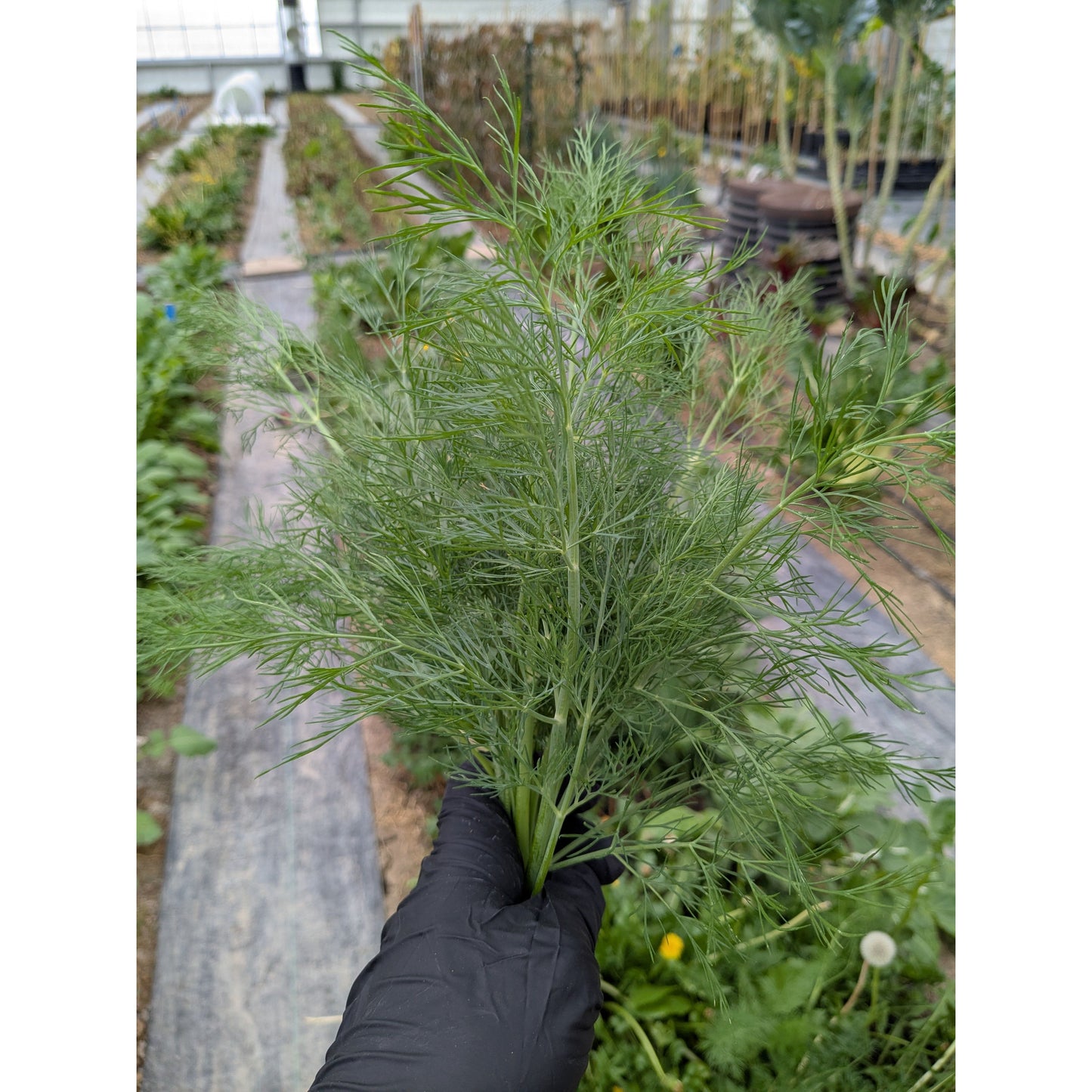Nutrient Farm
Subscription Discounts may be combined with other discounts.
Couldn't load pickup availability
Dill (Anethum graveolens) is a versatile herb known for its delicate, feathery green leaves and distinctive aroma, which is often described as a blend of fennel, anise, and celery with a slightly sweet undertone. It belongs to the Apiaceae family, which includes other aromatic plants like parsley, cumin, and bay leaves. Dill is native to the Mediterranean region and southern Russia but has been widely cultivated around the world.
Dill grows as an annual herb, reaching heights of up to 3 feet (about 1 meter) with slender stems and soft leaves. Its flowers are small, yellow, and grow in umbrella-shaped clusters known as umbels. The entire plant is aromatic, and both its leaves and seeds are used in cooking.
The leaves, commonly referred to as dill weed, are delicate and have a mild, grassy flavor that pairs well with fish, potatoes, and yogurt-based sauces. They are often used fresh to preserve their flavor and aroma, though they can also be dried for use in spice blends and seasonings.
Dill seeds are stronger in flavor compared to the leaves, with a slightly bitter taste that is reminiscent of caraway seeds. They are commonly used in pickling recipes, as well as in bread, soups, and vegetable dishes.
Beyond its culinary uses, dill has been used traditionally for medicinal purposes, including aiding digestion, relieving intestinal gas (carminative), and as a mild sedative. It's also rich in vitamins A and C, along with minerals like iron and manganese.
In gardening and agriculture, dill attracts beneficial insects and can be planted alongside crops to enhance biodiversity and pest management.
Nutrient Farm Herbs are produced with the highest levels of farming stewardship.
